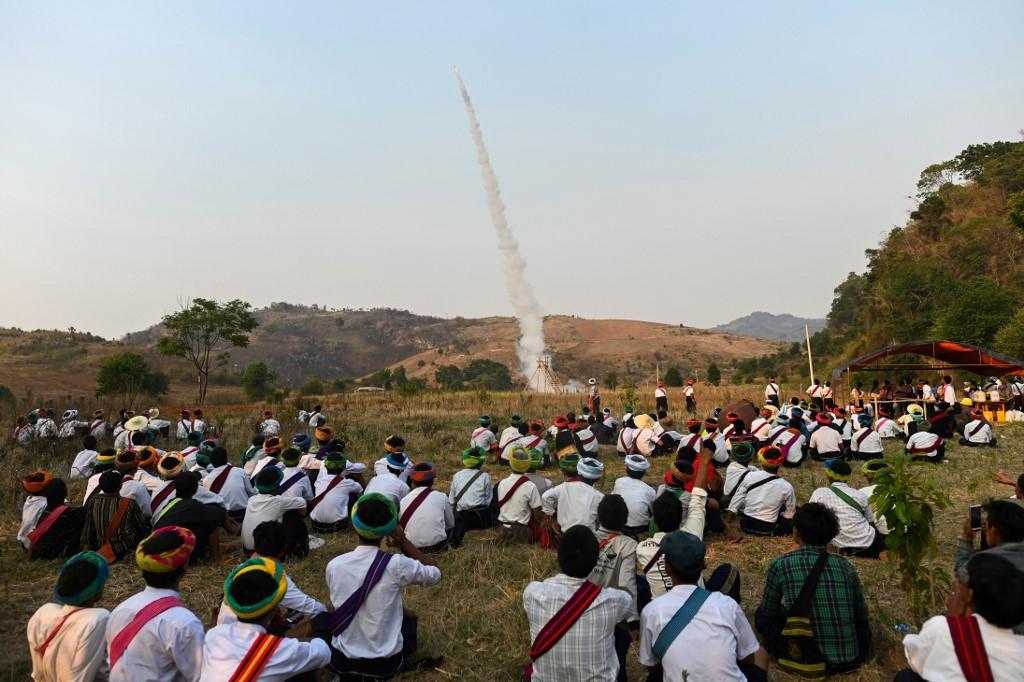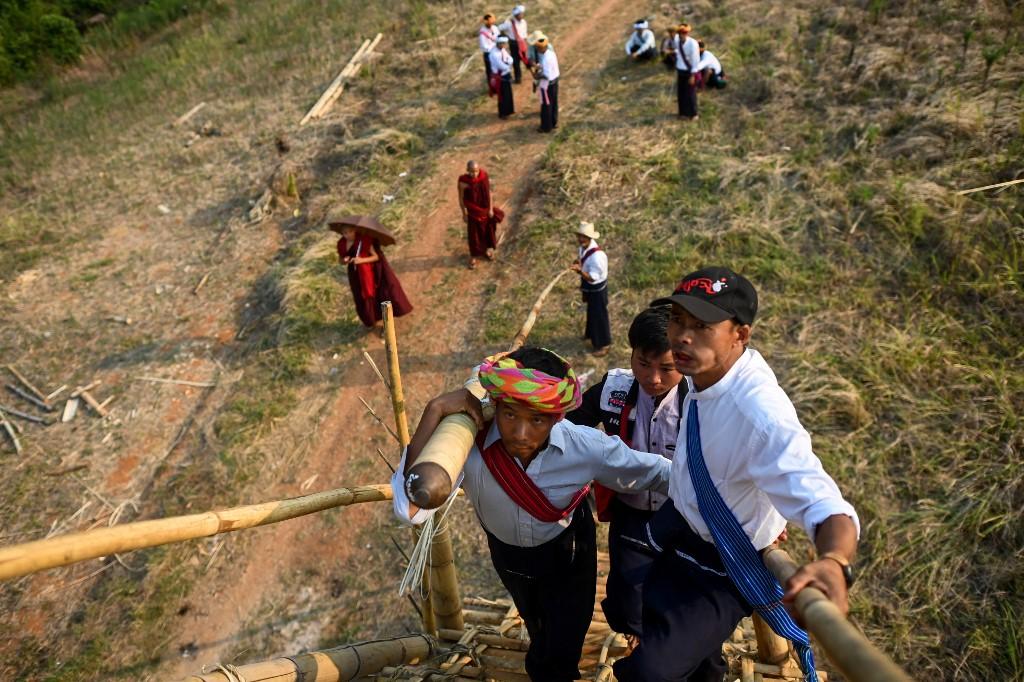
Clad in elaborate headdresses representing dragons and wizards, Myanmar's ethnic Pa'O fire huge, homemade rockets into the sky—an annual call for plentiful rains and a chance for a windfall of cash.
The Pa'O are one of the largest of the country's minority groups, numbering around 1.2 million people and living mainly in Shan state's highlands.
They are overwhelmingly Buddhist but many intertwine animism with their faith, believing they descend from a she-dragon and a wizard with mystical powers, known as a "weiza."
Twelve days after Myanmar's new year celebrations, as temperatures rise to over 40 degrees, Pa'O communities travel to Nantar village for the annual rocket competition, which ends on Wednesday.
"Calling the rain like this every year means we get bumper rice harvests," co-organiser Rike Kham tells AFP at the Pwe Lu Phaing festival's 144th edition.
Dragons and wizards
People dress in their finest, donning dark tunics and trousers in mourning for the kingdom they lost to the Bamar (Burmese) nearly 1,000 years ago.
But their headwear make up for their sombre attire.
Many women opt for a traditional bright orange cloth, symbolising the dragon.
Others, like Nan Pyone Kha Cho, 21, choose a more modern approach, sporting turbans of scarlet, gold or silver.
A golden hairpin is the "mother dragon's fang", she explains.
Men wear rolled-up cloth of various hues on their heads in the image of the "weiza" as they parade singing and dancing into the village, holding aloft their homemade rockets.
'Safety first'
In the past, these were crafted entirely from bamboo and would carry up to 40 kilos of explosives.
Now they are made with bamboo-wrapped metal, holding five different grades of gunpowder.
For "safety reasons" the maximum length is three feet (0.9 metres) and the diameter must not exceed three inches (eight centimetres).
A monk blesses each device, praying for a safe and long flight, then one-by-one the teams are called to the 10 metre-high bamboo firing rig.
The rocket is laid in position, the trajectory carefully adjusted.
The team captain takes a drag from a cigarette then uses it to light the fuse, before clambering down the bamboo rungs as the rocket lifts off with a deafening roar.
They can land up to seven or eight kilometres away, creating craters 1.5 metres deep in the fields.
A team of "linesmen" note the landing positions so they can later be collected.
High stakes
Accidents are rare, says Rike Kham.
Aside from an unlucky water buffalo hit in 2016, nobody has been hurt since two people died ten years ago after "badly mixing the gunpowder".
The whole village celebrates a good flight—they after all clubbed together to fund the rockets that cost around $170 each.
Judged by distance, the villages behind the top three placed rockets each take a share of the pooled entry fees.
With 75 rockets in this year's competition, the prize money amounts to some $4,000—enough to upgrade a road, build a bridge or connect more homes to the grid.
Girl rocket power
One group of women is challenging the traditionally testosterone-driven festivities.
They dance into the village for the second year holding high their own rocket, albeit full of donation money rather than gunpowder.
But next year they will take part with "real rockets," Mhoe Phar Ohon Ye, 67, said smiling, adding that women from other villages are following their lead.
As the sun sets and the rockets fall silent, the next generation is in training.
Groups of boys set off fireworks to squeals of delight and fire toy guns into the air in celebration.



